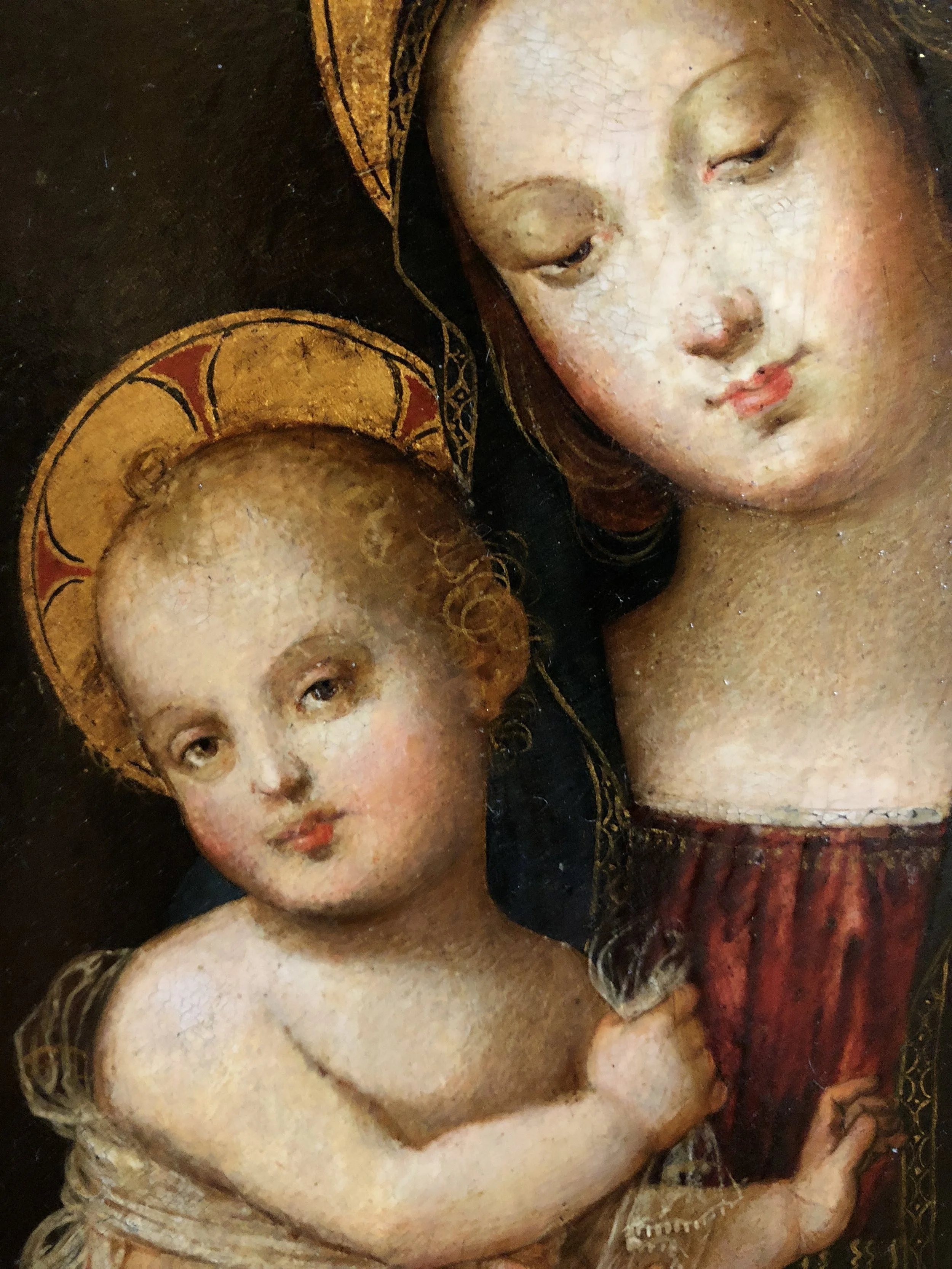LO SPAGNA (1450 – 1528, Italian)
Madonna and Child
Oil and gold on panel
7 3/8 x 5 1/8 in. (8.7 x 12.8 cm.)
12.85 x 11 inches, inc. frame
Price: Price on Application
Giovanni di Pietro, lo Spagna acquired his nickname because he was born in Spain. He was first documented in the Florentine workshop of Perugino in 1492, at which point he seems to have been a very young assistant. A panel of Christ carrying the cross from the Monastero della Beata Colomba, Perugia (below) seems to have been painted before 1497, but its attribution to lo Spagna is uncertain. He is documented in Spello in 1502, and could have worked as an assistant to Pintoricchio there.
Lo Spagna received the important commission for the altarpiece of the Coronation of the Virgin for the Observant Franciscans of Santa Maria di Montesanto, Todi (below) in 1507, but does not seem to have started work on it until 1511.
Before that date, he had almost certainly completed three panels of the Adoration of the Magi that are very similar to each other: ✴the altarpiece that Abbot Eusebio Ancaiani of Spoleto commissioned for San Pietro in Valle (below) in 1508; ✴the so-called Madonna della Spineta for the church of this name outside Todi; and ✴the main panel of an altarpiece for Sant’ Antonio Abate, Perugia (below), which was probably completed by 1510, the year in which another artist was commissioned to paint the predella. According to Giorgio Vasari, lo Spagna worked with Perugino in Perugia, but left the city after Perugino’s death (i.e. in 1524) because the other painters there were “so hostile to strangers”.
Since his source was Dono Doni, who had worked as an assistant to lo Spagna, as a young man, this information is likely to be broadly correct. Fr. Ludovico da Pietralunga, who was close to Dono Doni, repeats this story in his guide (ca. 1575) to San Francesco, Assisi. He points out that lo Spagna worked in many cities in Umbria, except Perugia, and he blames the actions of fellow-artists such as Giannicola di Paolo and Domenico Alfani. (This account mentions that Raffaellino del Colle trained under lo Spagno).
The Commune of Spoleto granted citizenship to “magistri Iohannis hyspani pictoris excellentissimi” in 1516, at which point he had lived in Spoleto for many years and to have married there. In another document of 1516, he is recorded as the son-in-law of Nicolò Martorelli, who settled property on him and his wife, Santina. He was nominated Capitano delle Arti dei Pittori e degli Orefici in 1517. One of his daughters married Jacopo Siculo, another “foreign” artist who had settled in Spoleto. Lo Spagna died in Spoleto in 1528, possibly of the plague, while at work in San Giacom di Spoleto (below). The last fresco to be commissioned from him in that church was completed after his death by his assistants, Dono Doni (mentioned above) and Cecco di Bernardino d’ Assisi.





